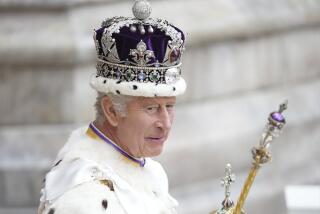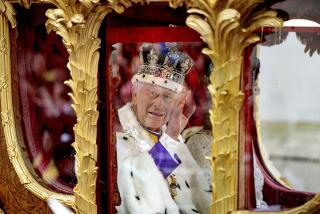Ireland welcomes Queen Elizabeth II
The last time a British monarch set foot in the south of Ireland, the Emerald Isle was still a jewel in his crown and its people were still his subjects. The king was George V, and his visit took place a century ago.
On Tuesday, his granddaughter, Queen Elizabeth II, became the first of his successors to follow in his footsteps, but she came as the head of state of a foreign country, on an official visit to a proudly independent republic.
Her historic four-day trip is testament to the new reality of Anglo-Irish relations, a seal on the reconciliation of two nations bound by a complicated and bloody past. For decades after Ireland gained its independence from Britain in 1922, bitterness marred the relationship across the Irish Sea.
But ties between the two countries, each other’s closest neighbor, have matured and warmed enough for them to treat each other as equals. That, and the success of peacemaking in Northern Ireland, paved the way for a royal visit that would’ve been anathema not long ago to the many Irish whose ancestors suffered under Elizabeth’s.
“Generations of Irish patriots could only dream of a time when a British monarch would arrive here as honored guest rather than condescending ruler, as a friendly neighbor rather than an embodiment of imperial power,” the Irish Times marveled in an editorial published Tuesday. “It is at last possible to say that the relationship between Britain and Ireland is simply normal.”
In other words, the ghosts of history may still hover, but they don’t haunt the way they used to.
That history was evident from the moment the queen arrived: Her plane touched down at a military air base near Dublin named after Roger Casement, an ardent nationalist whom the British government executed for treason in 1916.
Wearing a shamrock-green coat and hat, the 85-year-old monarch was driven in a bulletproof car to the official residence of Irish President Mary McAleese, an imposing white building once home to the viceroys who administered Ireland on behalf of the British crown. It was McAleese who issued the invitation for a state visit; the two women had met several times.
Before the queen’s arrival, McAleese called it “absolutely the right moment” for such a visit. In London, British Prime Minister David Cameron said, “Now is a great moment for people in Britain and people in Ireland to remember what it is we share.”
Polls showed a majority of Irish to be in support of the visit, but dozens of people protested nearby when the queen made a powerfully symbolic stop at a garden dedicated to the memory of those who died in the struggle for Ireland’s freedom from often harsh and repressive British rule. She laid a wreath in solemn tribute while an Irish military band struck up “God Save the Queen.”
Though the visit was announced last year, the groundwork was laid in 1998, when republicans and loyalists signed the power-sharing pact that formally ended armed hostilities in Northern Ireland. The province remains part of Britain; Ireland agreed to drop its claim to the territory.
Northern Ireland’s “Troubles” touched the queen personally: Her cousin, Louis Mountbatten, was killed in 1979 while on vacation in western Ireland by a bomb planted by the Irish Republican Army.
Mindful that some emotions still run high over Britain’s and Ireland’s shared past, authorities have mounted a massive security operation for the queen’s visit. It was an expensive undertaking for a country whose economy has nose-dived and whose government is so broke it had to request a bailout from the European Union.
Late Monday, Irish police found and disabled a bomb on a bus bound for Dublin, and in London, Scotland Yard was on high alert because of a credible bomb threat believed to be from republican dissidents in Northern Ireland.
But all went smoothly Tuesday. In addition to the Garden of Remembrance, the queen visited Trinity College, founded in the 16th century by her namesake, Elizabeth I.
From the Irish capital, she will go on to other parts of the country, including a stop at a stud farm in southeast Ireland, reflecting her interests and skills as an accomplished horsewoman.
The trip wraps up Friday, at which point Britain’s monarch, who has visited more than 120 nations during her 59-year reign, can finally cross off her list the one country that lies closer than any other but that for decades seemed so far.
More to Read
Start your day right
Sign up for Essential California for news, features and recommendations from the L.A. Times and beyond in your inbox six days a week.
You may occasionally receive promotional content from the Los Angeles Times.







